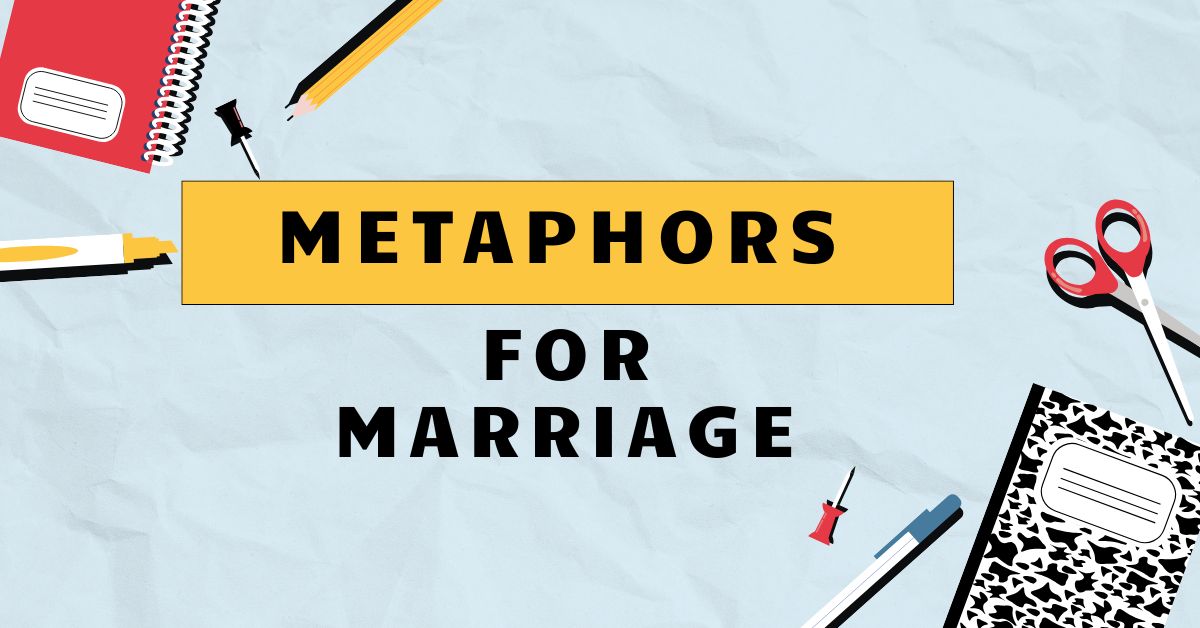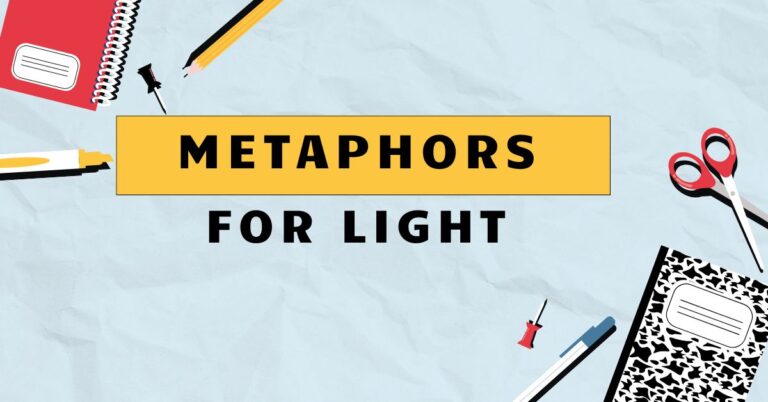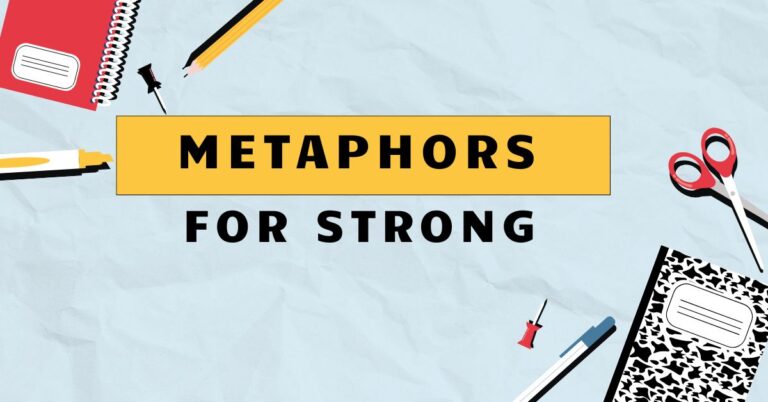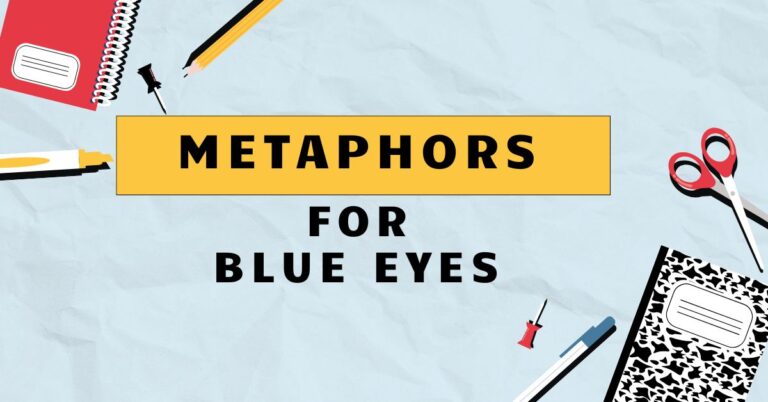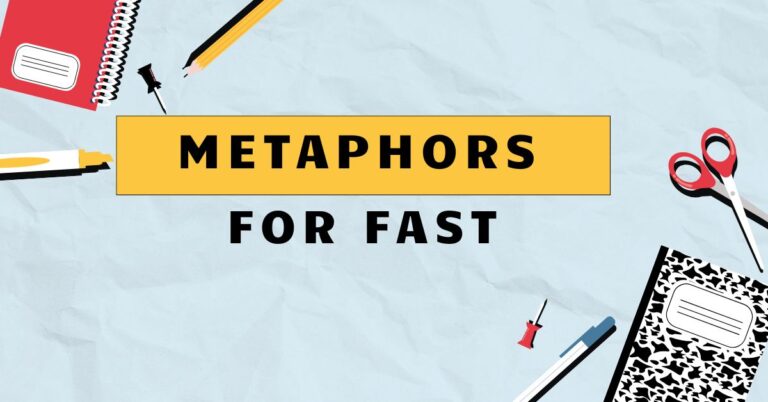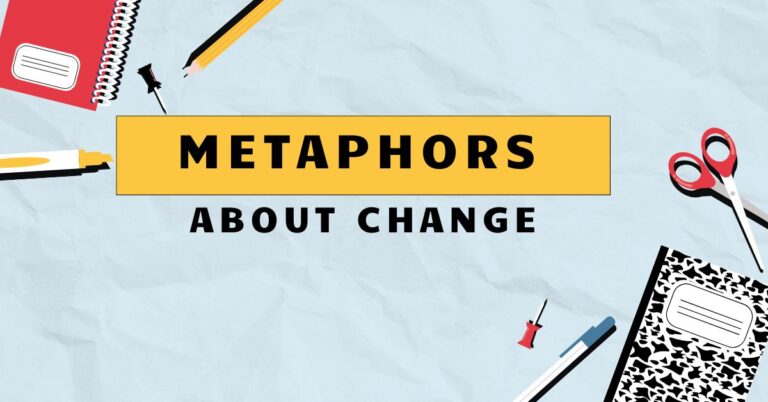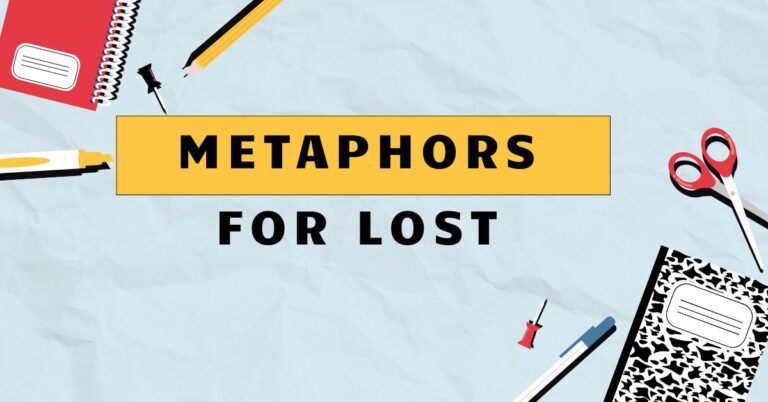41 Marriage Metaphors: Understanding Symbolic Language
Metaphors are powerful tools that shape our understanding of complex concepts, and marriage is no exception. By using metaphorical language, we can express the multifaceted nature of marriage in a more vivid and relatable way.
Understanding these metaphors not only enhances our comprehension of marital dynamics but also enriches our communication about relationships. This article explores various metaphors for marriage, their structural elements, usage rules, and common mistakes, offering practical exercises to solidify your grasp of this linguistic concept.
This guide is perfect for English language learners, relationship enthusiasts, and anyone looking to deepen their understanding of how language shapes our perception of marriage.
Table of Contents
- Introduction
- Definition of Marriage Metaphors
- Structural Breakdown
- Types and Categories
- Examples of Marriage Metaphors
- Usage Rules
- Common Mistakes
- Practice Exercises
- Advanced Topics
- FAQ
- Conclusion
Definition of Marriage Metaphors
A metaphor is a figure of speech that directly compares two unrelated things, highlighting shared characteristics without using “like” or “as.” In the context of marriage, metaphors describe the relationship using terms and concepts from other domains, offering a fresh perspective on its complexities. These metaphors function by transferring qualities from the source domain (e.g., a garden) to the target domain (marriage), helping us conceptualize the relationship in a more concrete or emotionally resonant way.
Marriage metaphors are pervasive in literature, everyday conversation, and relationship counseling, showcasing their profound influence on how we perceive and discuss marriage.
The function of marriage metaphors extends beyond mere description. They actively shape our understanding and expectations of marriage.
For example, if we view marriage as a “journey,” we might anticipate challenges and milestones along the way, requiring adaptability and teamwork. Conversely, if we perceive marriage as a “battleground,” we might approach disagreements with a defensive mindset, potentially exacerbating conflict.
Therefore, understanding the underlying metaphors can help us navigate the realities of marriage more effectively.
Marriage metaphors appear in various contexts, from casual conversations about relationship struggles to formal marriage vows that pledge to “weather any storm.” They are used in self-help books to offer guidance on nurturing a healthy relationship and are often employed by therapists to help couples reframe their perspectives. The prevalence of marriage metaphors underscores their importance in our collective understanding and communication about this fundamental social institution.
Structural Breakdown
The structure of a marriage metaphor typically involves two key components: thesource domainand thetarget domain. The source domain is the concept or area from which the metaphorical language is drawn (e.g., a garden, a journey, a game).
The target domain is the marriage relationship itself. The metaphor works by mapping characteristics from the source domain onto the target domain, creating a new understanding of the marriage.
This mapping is not always one-to-one; rather, it highlights specific aspects of the marriage that resonate with the chosen metaphor.
For instance, in the metaphor “Marriage is a garden,” the source domain is “garden,” and the target domain is “marriage.” The metaphor suggests that marriage, like a garden, requires careful cultivation, nurturing, and attention to thrive. Just as a neglected garden can become overgrown with weeds, a neglected marriage can suffer from unresolved issues and lack of communication.
The structural effectiveness of a metaphor depends on the strength of the connection between the source and target domains and the clarity with which the shared characteristics are conveyed.
Furthermore, the effectiveness of a metaphor also relies on the shared cultural understanding of the source domain. If the audience is unfamiliar with the nuances of gardening, for example, the “Marriage is a garden” metaphor might lose some of its impact.
Therefore, when using marriage metaphors, it’s important to consider the audience’s background and choose metaphors that resonate with their experiences and knowledge.
Types and Categories
Marriage metaphors can be categorized based on the source domain they draw from. Understanding these categories can help us appreciate the diverse ways in which marriage can be conceptualized.
Journey Metaphors
Journey metaphors portray marriage as a voyage or path. They emphasize the continuous nature of the relationship and the challenges and rewards encountered along the way.
These metaphors often evoke a sense of progress, adventure, and the need for teamwork.
Examples:
- “Our marriage is a long and winding road.”
- “We’re navigating the ups and downs of marriage together.”
- “Marriage is a journey, not a destination.”
Structure Metaphors
Structure metaphors depict marriage as a building or foundation. They highlight the importance of stability, support, and careful construction.
These metaphors often emphasize the need for strong principles and shared values.
Examples:
- “Our marriage is the bedrock of our family.”
- “We’re building a strong foundation for our future together.”
- “Their marriage is a solid structure, built on trust and respect.”
Weather Metaphors
Weather metaphors use weather conditions to describe the emotional climate within the marriage. They can represent both positive and negative aspects, such as storms, sunshine, and calm breezes.
These metaphors often highlight the fluctuating nature of emotions and the need for resilience.
Examples:
- “We’ve weathered many storms in our marriage.”
- “Our love is like sunshine on a cloudy day.”
- “The marriage is going through a dry spell.”
Team Metaphors
Team metaphors portray marriage as a partnership or collaboration. They emphasize the importance of teamwork, communication, and shared goals.
These metaphors often evoke a sense of mutual support and shared responsibility.
Examples:
- “We’re a team, working together to achieve our dreams.”
- “Marriage is a partnership, where we support each other’s goals.”
- “They’re a well-oiled machine, running their household efficiently.”
Garden Metaphors
Garden metaphors depict marriage as a garden that needs to be nurtured and cultivated. These metaphors emphasize the importance of care, attention, and patience.
They often evoke a sense of growth, beauty, and the need for ongoing effort.
Examples:
- “Our marriage is a garden that we must tend with love and care.”
- “We need to prune the weeds of resentment in our relationship.”
- “Their love has blossomed over the years, like a beautiful garden.”
War Metaphors
War metaphors portray marriage as a battleground, often highlighting conflict and struggle within the relationship. These metaphors can be negative if overused, but they can also acknowledge the challenges that couples face.
They often evoke a sense of tension, competition, and the need for resolution.
Examples:
- “They’re always fighting battles in their marriage.”
- “We need to find a truce in our ongoing disagreements.”
- “Their marriage is a constant war of attrition.”
Economic Metaphors
Economic metaphors describe marriage in terms of investment, profit, and loss. They emphasize the resources, both tangible and intangible, that are put into the relationship.
These metaphors can highlight the need for careful management and equitable distribution of effort.
Examples:
- “We’ve invested so much time and energy into our marriage.”
- “Our love is a valuable asset.”
- “They’re always counting the cost of their decisions in the marriage.”
Dance Metaphors
Dance metaphors portray marriage as a coordinated and fluid movement. They emphasize the importance of rhythm, harmony, and responsiveness.
These metaphors often evoke a sense of grace, elegance, and mutual understanding.
Examples:
- “Marriage is a dance, where we learn to move together.”
- “They have a beautiful rhythm in their relationship.”
- “We need to find our common step and move in harmony.”
Examples of Marriage Metaphors
Here are some extensive examples of marriage metaphors, categorized by type. Each table provides a variety of sentences illustrating how these metaphors are used in different contexts.
Journey Metaphor Examples
The following table illustrates various journey metaphors used to describe different aspects of marriage. These metaphors emphasize the ongoing, evolving nature of the relationship.
| Example | Explanation |
|---|---|
| “Our marriage is a long and winding road, full of unexpected turns.” | Emphasizes the unpredictable nature of marriage and the need for flexibility. |
| “We’re navigating the choppy waters of marriage, but we’re doing it together.” | Highlights the challenges and difficulties that couples face, but also the importance of teamwork. |
| “Marriage is a marathon, not a sprint. It requires endurance and commitment.” | Stresses the long-term commitment required in marriage and the need to pace oneself. |
| “We’ve reached a crossroads in our marriage, and we need to decide which path to take.” | Indicates a critical decision point in the relationship and the need for careful consideration. |
| “Our marriage is a journey of self-discovery, as we learn and grow together.” | Highlights the personal growth and development that can occur within a marriage. |
| “We’re climbing the mountain of marriage, facing challenges one step at a time.” | Emphasizes the effort and perseverance required to overcome obstacles in the relationship. |
| “Our marriage is a voyage of exploration, discovering new things about each other every day.” | Highlights the ongoing process of learning and understanding each other within the marriage. |
| “We’re charting a new course in our marriage, redefining our roles and responsibilities.” | Indicates a significant change in the relationship and the need to adapt to new circumstances. |
| “Our marriage is a pilgrimage, a sacred journey of love and commitment.” | Emphasizes the spiritual and emotional significance of the marital bond. |
| “We’re walking hand-in-hand on the path of marriage, supporting each other every step of the way.” | Highlights the importance of mutual support and companionship in the relationship. |
| “Our marriage is a rollercoaster, with its highs and lows, thrills and scares.” | Highlights the emotional ups and downs experienced in a marriage. |
| “We’re sailing through calm seas in our marriage right now, enjoying a period of peace and harmony.” | Indicates a period of stability and happiness in the relationship. |
| “We’re stuck in a rut in our marriage, and we need to find a way to break free.” | Highlights a feeling of stagnation and the need for change. |
| “Our marriage is a quest for happiness, and we’re determined to find it together.” | Emphasizes the pursuit of happiness as a shared goal in the relationship. |
| “We’re lost in the wilderness of marriage, and we need to find our way back to each other.” | Indicates a feeling of disconnection and the need to reconnect. |
| “Our marriage is a bridge connecting our past and our future.” | Highlights the role of marriage in linking personal histories and future aspirations. |
| “We’re paving the way for a better future for our children through our marriage.” | Emphasizes the impact of the marriage on the family’s future. |
| “Our marriage is a constant uphill battle, but we’re not giving up.” | Highlights the challenges and perseverance required to maintain the relationship. |
| “We’re enjoying the scenic route of marriage, savoring every moment along the way.” | Emphasizes the appreciation of the journey and the present moment. |
| “Our marriage is a winding staircase, with each step bringing us closer together.” | Highlights the gradual progress and deepening connection in the relationship. |
| “We’re on the same wavelength on this journey.” | Highlights the unity and agreement in the relationship. |
| “We’re finding our own path in this marriage.” | Emphasizes the uniqueness of each marriage. |
| “We’re traveling the world together as a married couple.” | Highlights the shared experiences of a married couple. |
| “We’re making memories on our marital journey.” | Emphasizes the importance of shared experiences. |
| “We’re stopping to smell the roses in our marriage.” | Highlights the importance of taking time to appreciate the good things in the marriage. |
| “We’re learning to drive together in this marriage.” | Emphasizes the importance of learning and growing together. |
| “We’re making pit stops along the way.” | Highlights the importance of taking breaks and recharging. |
| “We’re enjoying the ride in our marriage.” | Emphasizes the importance of having fun and enjoying each other’s company. |
Structure Metaphor Examples
The following table provides examples of structure metaphors, emphasizing the foundation and stability aspects of marriage.
| Example | Explanation |
|---|---|
| “Our marriage is the bedrock of our family, providing stability and security.” | Highlights the foundational role of marriage in creating a stable family environment. |
| “We’re building a strong foundation for our future together, brick by brick.” | Emphasizes the gradual and deliberate construction of a lasting relationship. |
| “Their marriage is a solid structure, built on trust, respect, and communication.” | Highlights the essential elements that contribute to a strong and enduring marriage. |
| “We’re reinforcing the walls of our marriage with forgiveness and understanding.” | Emphasizes the importance of overcoming challenges and strengthening the relationship. |
| “Our marriage is the framework that supports our dreams and aspirations.” | Highlights the supportive role of marriage in achieving personal and shared goals. |
| “We’re laying the groundwork for a lifetime of happiness together.” | Emphasizes the preparation and planning required for a fulfilling marriage. |
| “Our marriage is a fortress, protecting us from the storms of life.” | Highlights the protective and secure nature of the marital bond. |
| “We’re constructing a love that will stand the test of time.” | Emphasizes the enduring quality of the relationship. |
| “Our marriage is a bridge connecting our hearts and souls.” | Highlights the connection and unity in the relationship. |
| “We’re anchoring our marriage in faith and commitment.” | Emphasizes the importance of shared values and dedication. |
| “Our marriage is the cornerstone of our lives, holding everything together.” | Highlights the central and essential role of marriage. |
| “We need to shore up the weak points in our marriage before they collapse.” | Emphasizes the need to address and strengthen vulnerabilities. |
| “Our marriage is a firm foundation upon which we can build our dreams.” | Highlights the supportive role of marriage in achieving personal goals. |
| “We’re cementing our love with shared experiences and memories.” | Emphasizes the importance of creating lasting bonds. |
| “Our marriage is a solid platform from which we can launch our careers and raise our children.” | Highlights the enabling role of marriage in supporting life goals. |
| “We’re decorating our marriage with love, laughter, and joy.” | Emphasizes the importance of creating a positive and fulfilling environment. |
| “Our marriage is a sturdy frame that holds our family together.” | Highlights the cohesive role of marriage within the family. |
| “We’re reinforcing our marriage with open communication and honesty.” | Emphasizes the importance of transparency and trust. |
| “Our marriage is a well-built structure that can withstand any challenge.” | Highlights the resilience and strength of the relationship. |
| “We’re designing a marriage that reflects our values and aspirations.” | Emphasizes the intentional and personalized nature of the relationship. |
| “Our marriage is a house that we built together.” | Highlights the shared effort and investment in the relationship. |
| “We’re furnishing our marriage with love and kindness.” | Emphasizes the importance of creating a warm and welcoming environment. |
| “Our marriage is a castle that protects us from the outside world.” | Highlights the protective nature of the relationship. |
| “We’re putting down roots in our marriage.” | Emphasizes the importance of stability and commitment. |
| “Our marriage is a monument to our love.” | Highlights the enduring quality of the relationship. |
| “We’re building our marriage on a foundation of friendship.” | Emphasizes the importance of having a strong friendship. |
| “Our marriage is a tower of strength.” | Highlights the resilience and strength of the relationship. |
| “We’re constructing our marriage with love and care.” | Emphasizes the importance of intentionality and effort. |
Weather Metaphor Examples
The following table provides examples of weather metaphors, illustrating the emotional climate and fluctuating nature of marriage.
| Example | Explanation |
|---|---|
| “We’ve weathered many storms in our marriage, but we’ve always come out stronger on the other side.” | Highlights the resilience of the relationship in the face of adversity. |
| “Our love is like sunshine on a cloudy day, bringing warmth and light into our lives.” | Emphasizes the positive and uplifting influence of love. |
| “The marriage is going through a dry spell, and we need to find ways to reignite the passion.” | Indicates a period of stagnation and the need for revitalization. |
| “We’re experiencing a heatwave of emotions in our marriage, both positive and negative.” | Highlights a period of intense feelings and heightened sensitivity. |
| “Our marriage is a calm sea, providing a sense of peace and tranquility.” | Emphasizes the stability and harmony within the relationship. |
| “We’re caught in a whirlwind of activity, and we need to find time to reconnect.” | Highlights the challenges of maintaining connection amidst a busy lifestyle. |
| “Our marriage is a gentle breeze, bringing a sense of freshness and renewal.” | Emphasizes the revitalizing and refreshing aspects of the relationship. |
| “We’re facing a torrential downpour of problems, and we need to find shelter together.” | Highlights the overwhelming nature of challenges and the need for mutual support. |
| “Our love is like a rainbow after the storm, a symbol of hope and promise.” | Emphasizes the positive outcomes and renewed hope after overcoming difficulties. |
| “We’re experiencing a cold snap in our marriage, and we need to find ways to warm things up.” | Indicates a period of emotional distance and the need for reconnection. |
| “Our marriage is experiencing a period of drought.” | Highlights a lack of emotional fulfillment in the relationship. |
| “We’re feeling the chill of indifference in our marriage.” | Emphasizes a lack of warmth and affection. |
| “Our marriage is a sunny day after a long winter.” | Highlights a return to happiness and warmth after a difficult period. |
| “We’re enjoying the spring of our marriage.” | Emphasizes a period of growth and renewal. |
| “Our marriage is a summer breeze.” | Highlights a feeling of lightness and ease. |
| “We’re weathering the storm together.” | Emphasizes the importance of working together to overcome challenges. |
| “Our marriage is a rainbow after the rain.” | Highlights the beauty and hope that can emerge after difficult times. |
| “We’re in the eye of the storm in our marriage.” | Highlights a moment of calm amidst chaos. |
| “Our marriage is a gentle shower.” | Highlights a feeling of refreshment and renewal. |
| “We’re feeling the heat of passion in our marriage.” | Emphasizes intense feelings of love and desire. |
| “Our marriage is a clear sky.” | Highlights a feeling of peace and tranquility. |
| “We’re feeling the fog of confusion in our marriage.” | Emphasizes a lack of clarity and understanding. |
| “Our marriage is a hurricane of emotions.” | Highlights intense and overwhelming feelings. |
| “We’re enjoying the golden autumn of our marriage.” | Emphasizes a period of contentment and appreciation. |
| “Our marriage is a warm fire on a cold night.” | Highlights a feeling of comfort and security. |
| “We’re feeling the frost of resentment in our marriage.” | Emphasizes feelings of bitterness and anger. |
| “Our marriage is a gentle snowfall.” | Highlights a feeling of peace and serenity. |
Usage Rules
When using marriage metaphors, it’s important to consider the context and audience. The effectiveness of a metaphor depends on its relevance, clarity, and appropriateness.
Avoid using mixed metaphors, which combine incompatible images and can create confusion. For example, “Our marriage is a garden that needs to navigate choppy waters” is a mixed metaphor because gardens don’t typically navigate waters.
Additionally, be mindful of the emotional impact of your metaphors. War metaphors, for example, can be detrimental if overused, as they can create a sense of conflict and negativity.
Instead, focus on metaphors that promote understanding, empathy, and positive communication. Choose metaphors that accurately reflect the nuances of the relationship and resonate with both partners.
Furthermore, ensure that your metaphors are culturally sensitive and avoid stereotypes. Consider the audience’s background and experiences when selecting metaphors to ensure they are well-received and understood.
Using inclusive and respectful language can foster a more positive and productive conversation about marriage.
Common Mistakes
One common mistake is overusing negative metaphors, such as war or prison metaphors, which can create a pessimistic view of marriage. Another mistake is using clichés that have lost their impact and fail to convey a meaningful message.
For example, saying “Marriage is a bed of roses” is a cliché that doesn’t offer a fresh perspective.
Another common mistake is using metaphors that are too abstract or complex, making them difficult to understand. Metaphors should be relatable and grounded in common experiences.
Avoid using metaphors that are ambiguous or open to misinterpretation. Clarity is essential for effective communication.
Here are some examples of common mistakes and how to correct them:
| Incorrect | Correct | Explanation |
|---|---|---|
| “Our marriage is a prison that needs to be nurtured like a garden.” | “Our marriage is a garden that needs careful tending.” | Avoid mixed metaphors and focus on positive images. |
| “Marriage is a bed of roses.” | “Marriage is a garden that requires constant care and attention.” | Avoid clichés and use more specific and meaningful metaphors. |
| “Our marriage is a quantum entanglement of existential proportions.” | “Our marriage is a deep connection that transcends everyday experiences.” | Avoid overly complex metaphors and focus on clarity and relatability. |
Practice Exercises
Test your understanding of marriage metaphors with the following exercises.
Exercise 1: Identifying Metaphors
Identify the marriage metaphor used in each sentence and explain its meaning.
| Question | Answer |
|---|---|
| “Their marriage is a well-oiled machine.” | Metaphor: Well-oiled machine. Meaning: The marriage functions smoothly and efficiently due to good communication and cooperation. |
| “We’re building a bridge to a better future through our marriage.” | Metaphor: Building a bridge. Meaning: The marriage is a connection that leads to positive outcomes and a shared future. |
| “They’re locked in a battle of wills in their marriage.” | Metaphor: Battle of wills. Meaning: The marriage is characterized by constant conflict and power struggles. |
| “Our marriage is a dance, and we’re learning to move together.” | Metaphor: Dance. Meaning: The marriage requires coordination, harmony, and mutual responsiveness. |
| “We’re weathering a storm in our marriage, but we’ll get through it.” | Metaphor: Weathering a storm. Meaning: The marriage is facing challenges, but the couple is resilient and determined to overcome them. |
| “Our marriage is a treasure chest.” | Metaphor: Treasure chest. Meaning: The marriage is full of valuable experiences and memories. |
| “We are a team.” | Metaphor: Team. Meaning: The marriage is a partnership where they work towards common goals. |
| “Our marriage is a blank canvas.” | Metaphor: Blank canvas. Meaning: The marriage is full of potential and possibilities. |
| “We’re writing our own story.” | Metaphor: Writing a story. Meaning: The marriage is unique and shaped by their shared experiences. |
| “We’re on the same page.” | Metaphor: Same page. Meaning: The couple is in agreement and understanding each other. |
Exercise 2: Creating Metaphors
Create a marriage metaphor for each of the following scenarios.
| Scenario | Answer |
|---|---|
| A couple who communicates effectively and supports each other. | “Their marriage is a well-tuned orchestra, playing in perfect harmony.” |
| A couple facing financial difficulties but remaining united. | “Their marriage is a sturdy ship weathering a financial squall.” |
| A couple who has grown closer over time through shared experiences. | “Their marriage is a fine wine, aging gracefully and becoming richer with time.” |
| A couple who is constantly arguing and disagreeing. | “Their marriage is a battlefield, with constant skirmishes and power struggles.” |
| A couple who is rediscovering their love after a period of distance. | “Their marriage is a garden in the spring, blossoming with new life and renewed affection.” |
| A couple who is always learning and growing together. | “Their marriage is a school where they are constantly learning and growing.” |
| A couple who is always there for each other. | “Their marriage is a safety net.” |
| A couple who always makes each other laugh. | “Their marriage is a comedy show.” |
| A couple who is always exploring new things together. | “Their marriage is an adventure.” |
| A couple who is always working on their relationship. | “Their marriage is a work in progress.” |
Advanced Topics
For advanced learners, exploring the cultural variations in marriage metaphors can be insightful. Different cultures may use different metaphors to describe marriage based on their values and traditions.
Analyzing these variations can provide a deeper understanding of cultural perspectives on marriage.
Another advanced topic is the use of extended metaphors, where a single metaphor is developed and expanded throughout a piece of writing or conversation. This technique can create a more vivid and impactful message.
For example, an entire essay could be structured around the metaphor of marriage as a garden, exploring different aspects of the relationship through the lens of gardening practices.
Furthermore, exploring the rhetorical effect of different marriage metaphors can enhance your communication skills. Understanding how metaphors influence emotions and perceptions can help you choose the most effective language to convey your message and foster positive relationships.
Consider the ethical implications of using certain metaphors and strive for language that is respectful, inclusive, and promotes understanding.
FAQ
- What is the main purpose of using marriage metaphors?
The main purpose is to provide a more vivid and relatable understanding of the complex dynamics of marriage. Metaphors help us conceptualize abstract concepts in a concrete way, making them easier to grasp and communicate.
- How do marriage metaphors influence our perception of relationships?
Marriage metaphors can shape our expectations, attitudes, and behaviors within a relationship. For example, if we view marriage as a “journey,” we might be more prepared for challenges and adapt more readily to change. Conversely, negative metaphors can create a pessimistic outlook.
- What are some common categories of marriage metaphors?
Common categories include journey metaphors, structure metaphors, weather metaphors, team metaphors, garden metaphors, war metaphors, and economic metaphors. Each category highlights different aspects of the relationship.
- How can I avoid using mixed metaphors when discussing marriage?
To avoid mixed metaphors, ensure that the images and concepts you combine are compatible and logically consistent. Focus on maintaining a clear and coherent metaphorical framework throughout your communication.
- Are there any marriage metaphors that should be avoided?
Yes, it’s best to avoid overly negative metaphors, such as war or prison metaphors, as they can create a pessimistic and conflict-driven view of marriage. Focus on using positive and constructive metaphors that promote understanding and empathy.
- How can I use marriage metaphors to improve my communication with my partner?
By understanding the metaphors that resonate with your partner, you can communicate more effectively and empathetically. Use metaphors to express your feelings, share your perspective, and foster a deeper connection.
- Can marriage metaphors be different across cultures?
Yes, marriage metaphors can vary significantly across cultures, reflecting different values, traditions, and social norms. Understanding these cultural variations can provide valuable insights into diverse perspectives on marriage.
- How can I identify the underlying metaphor in a conversation about marriage?
Pay attention to the language used to describe the relationship. Look for comparisons, analogies, and symbolic expressions that suggest a particular metaphorical framework. Consider the emotional tone and overall message conveyed by the language.
- What is an extended marriage metaphor?
An extended metaphor is when a single metaphor, such as marriage as a garden, is used and developed throughout an entire conversation, piece of writing or discussion. The writer or speaker continues to use language related to the original metaphor to continue to paint a picture for the audience.
- How does the “marriage as a house” metaphor work?
The “marriage as a house” metaphor works by comparing the different aspects of a house to the different aspects of a marriage. The foundation of the
Conclusion
Marriage metaphors are powerful linguistic tools that shape our understanding and communication about relationships. By recognizing and analyzing these metaphors, we can gain deeper insights into the complexities of marriage and enhance our ability to navigate its challenges and celebrate its joys.
Whether viewing marriage as a journey, a garden, a team, or a dance, the metaphors we choose can significantly influence our perceptions and expectations. By using metaphors thoughtfully and consciously, we can foster more meaningful and fulfilling relationships.

